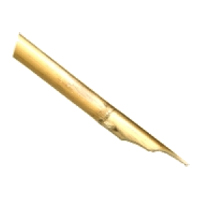
Writing tube - Camuls
The kalamos (from Gr. κάλαμος, pl. κάλαμοι kalamoi; lat. calamus, pl. calami) is a writing tube made of reeds that was used throughout antiquity.
The writing tube (camulus) was used by the Egyptians, Greeks, and Romans. It consists of a tube with a flattened tip. As with the quill, the writing tube was dipped with its tip is ink and could be used as a result for writing for a few words of writing.
Depending on how thick a stroke was to be, the tip of the camulus was tilted slightly to one side.
Among the oldest known specimens is a bronze calamus found together with a papyrus scroll in a 5th century BC tomb in Attica (Greece). The use of bird feathers as writing implements is not mentioned in literature in antiquity before the 6th century AD.
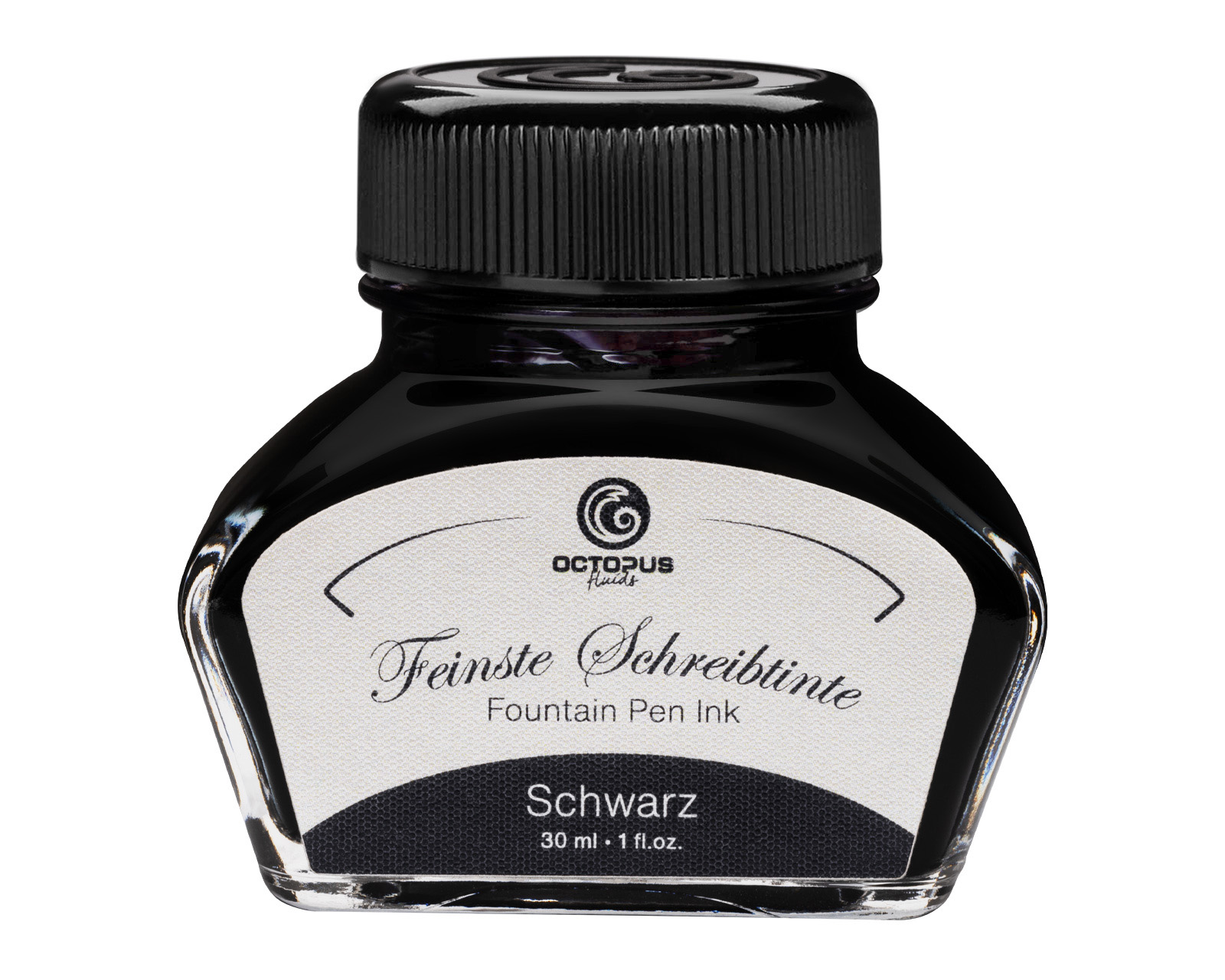 Classic fountain pen ink Schwarz
Classic fountain pen ink Schwarz
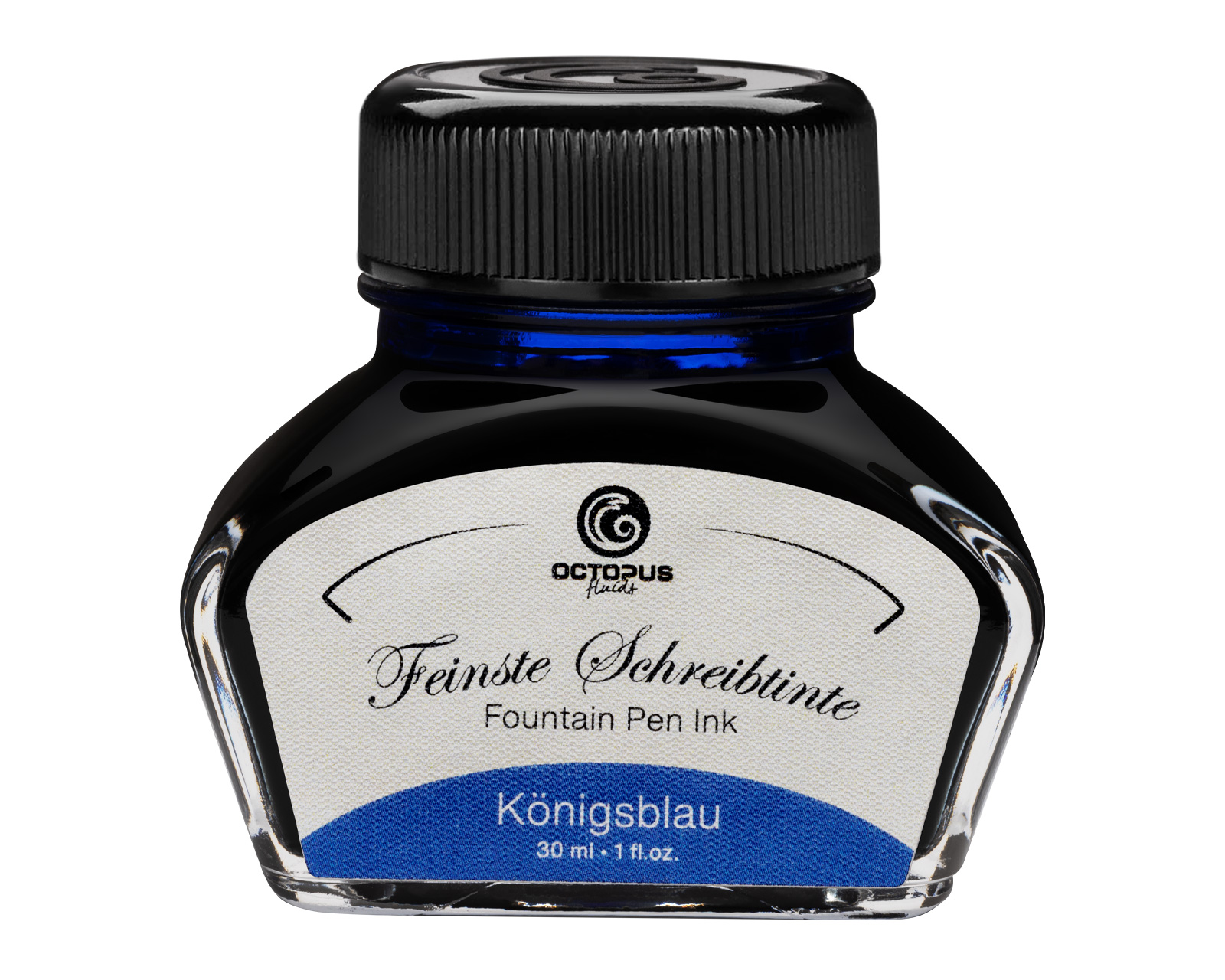 Classic fountain pen ink Königsblau - Royal blue erasable
Classic fountain pen ink Königsblau - Royal blue erasable
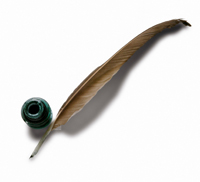
Goose quill - quill pen
The usual writing instrument in the Middle Ages was the goose quill, also called quill pen. Only 4 large wing feathers could be taken per goose. The feather plumes were plucked out and the tip of the feather was put into hot sand to harden. After that, the tip of the feather could be cut to size.
Goose quills or quills as writing nibs are the oldest precursors of the fountain pen. Since mostly feathers from geese were used, they are often called goose quill or (older) gander quill. If you want to try to write with a quill today, you should make sure that left-handed people buy the quills of the right wing and right-handed people buy the quills of the left wing. The reason for this is the anatomical design and the resulting handiness of the quill. For writing, the disturbing feathering of the keel was usually removed.
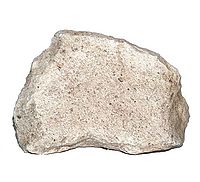
Error correction
Medieval scribes also made mistakes. What did they do then?
The surface of the parchment was rubbed off with a pumice stone at the points of error. Then the spot was whitened (lightened) with chalk or sepia dust and polished with a pig's tooth until it was smooth again. Now one could repair one's scribal error.
Fortunately for today's scientists - unfortunately for those who knew how to write at that time - the original text can often still be read in the backlight or by photographic methods, which can be a real treasure trove for today's research.
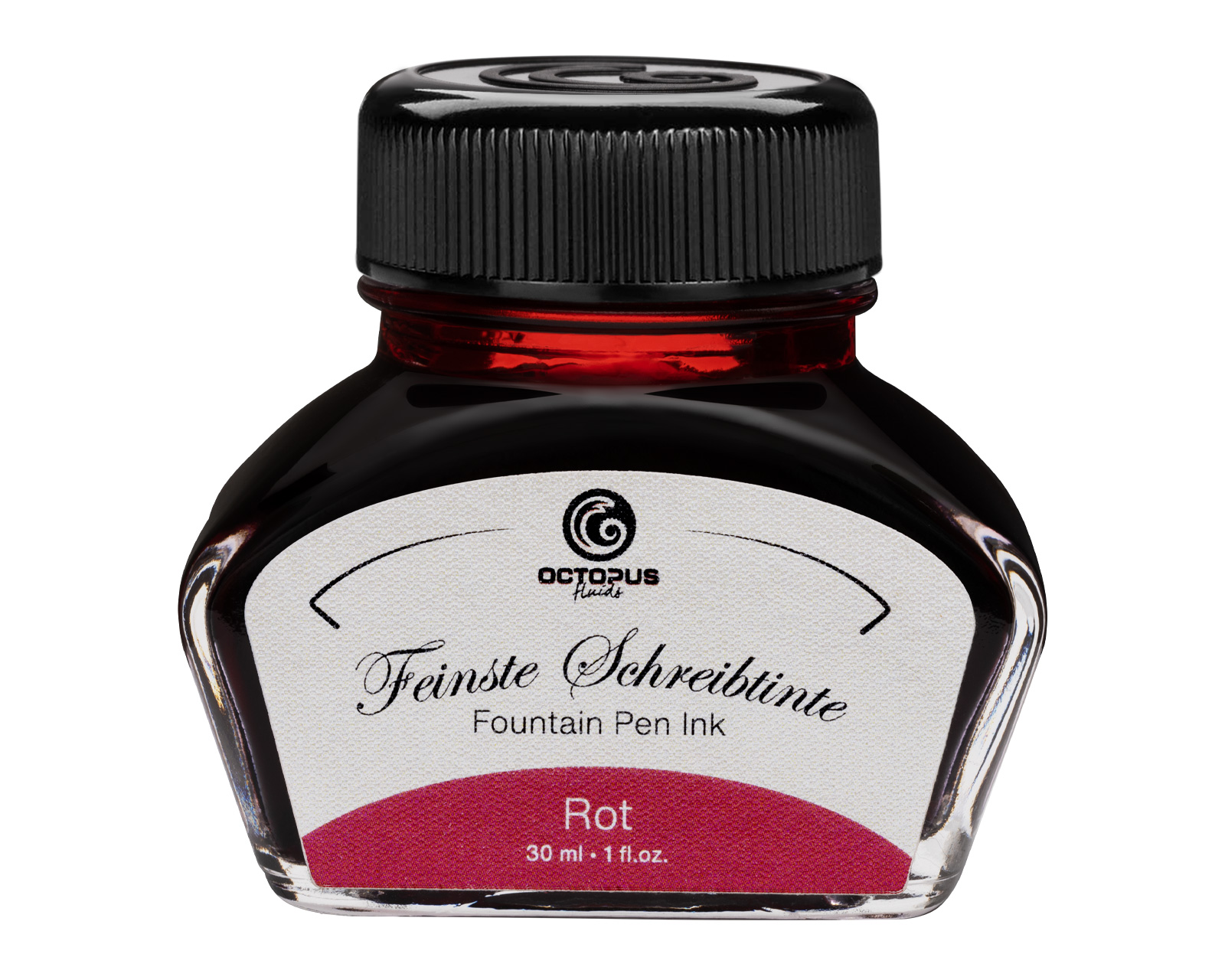 Classic fountain pen ink Rot
Classic fountain pen ink Rot
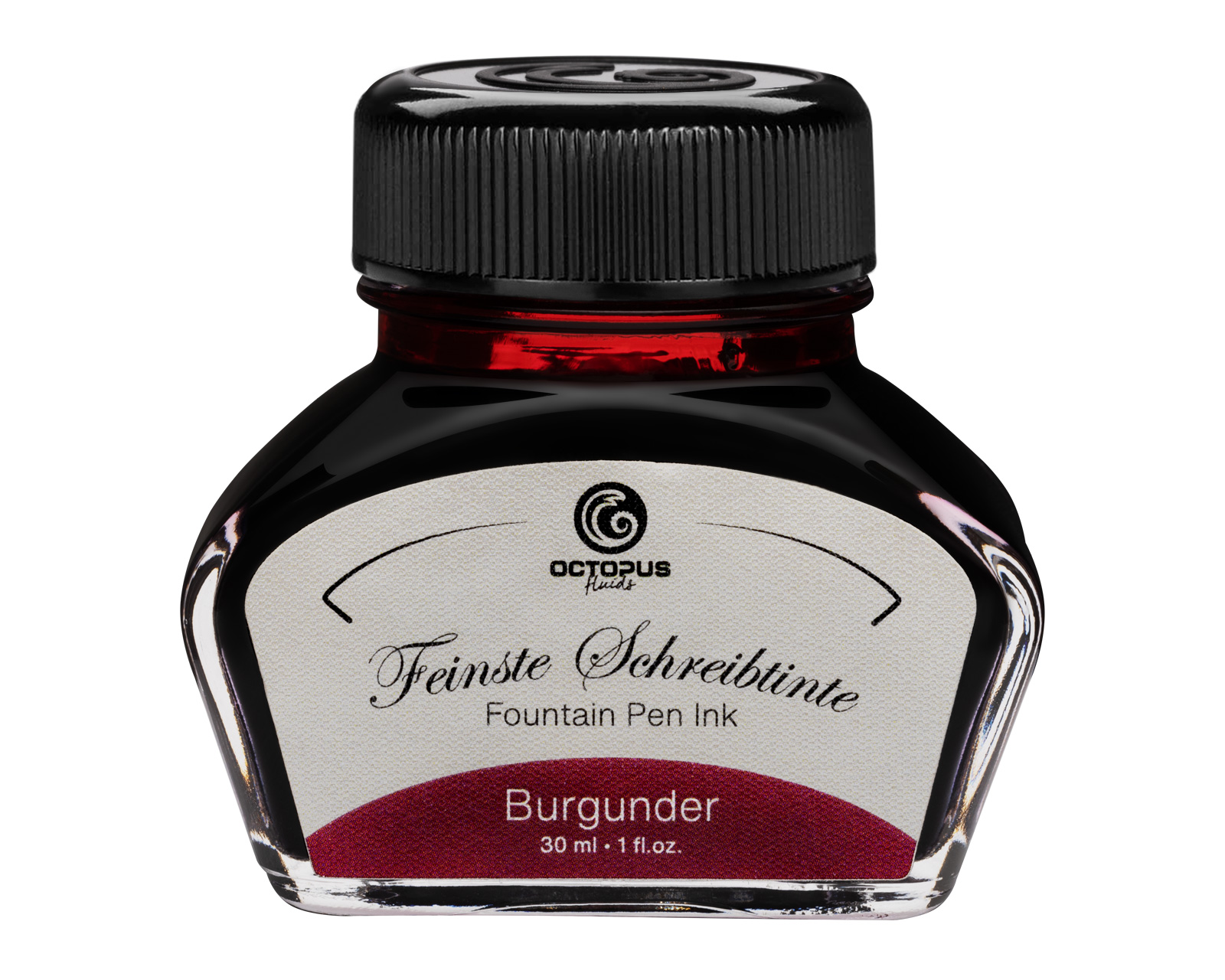 Classic fountain pen ink Burgunder
Classic fountain pen ink Burgunder
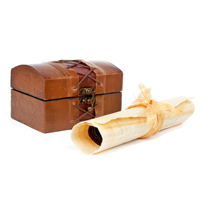
Writing materials
The common writing material in the early and high Middle Ages was parchment - that is, the tanned, whitened and thinly polished skin of animals. Older codices could also be made of papyrus - a pulp made from a reed fiber.
In principle, all animal skins could be made into parchment, but cattle and sheep were preferred. Very fine parchment could be obtained from the skin of unborn lambs, since these had no injuries. Of course, lamb and dam had to die for this high-quality writing material.
Paper did not gain momentum on the continent north of the Alps until the advent of letterpress printing (Gutenberg) - which required larger quantities of writing material due to its higher print runs. It was already known in the High Middle Ages, but was rarely used.
Our own experiments with handmade paper have shown that writing with a goose quill is relatively difficult due to the uneven texture and softness and often leads to ink stains, as the quill gets stuck in the material.
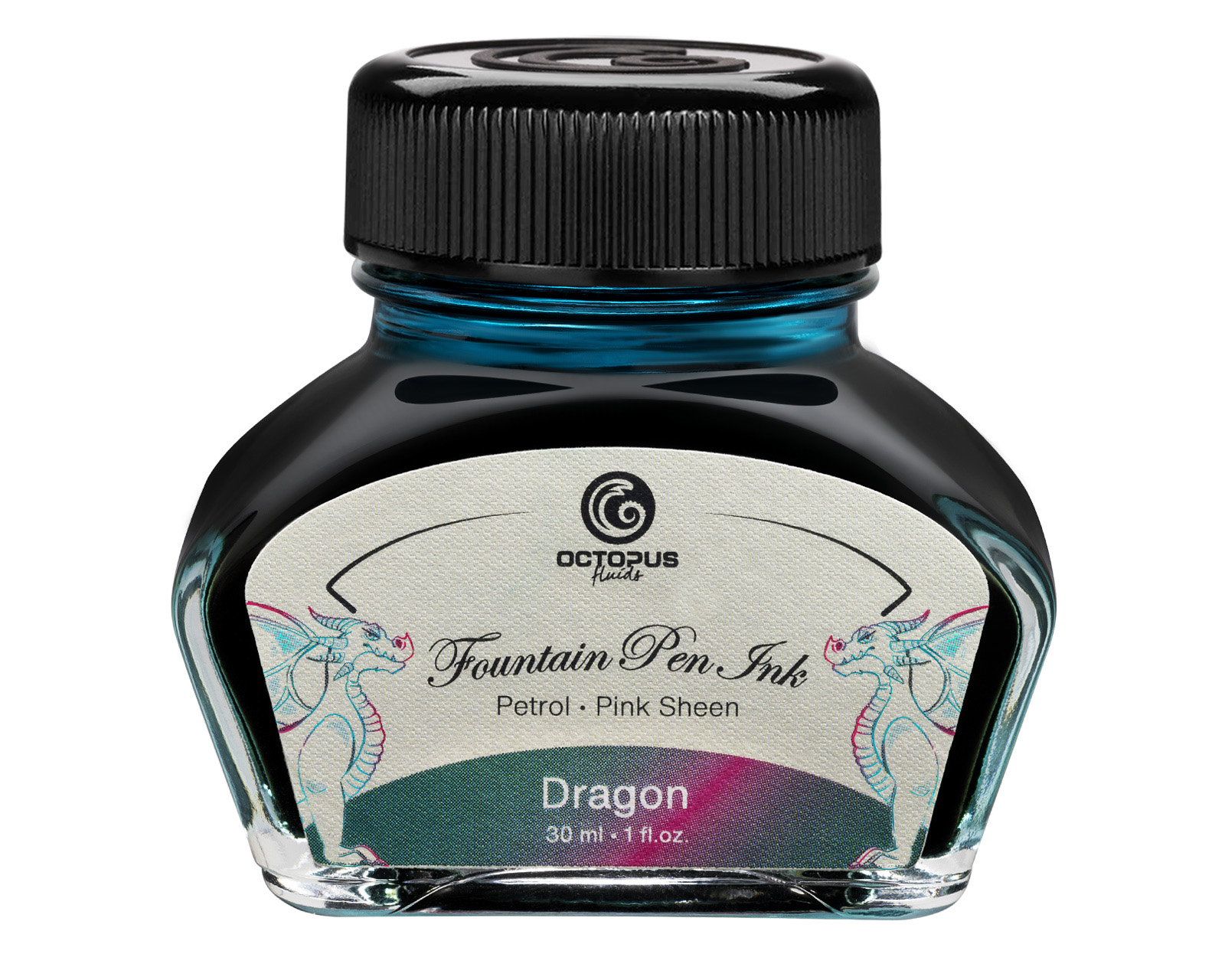 Fountain Pen Ink Sheen, Dragon, Petrol, 30 ml
Fountain Pen Ink Sheen, Dragon, Petrol, 30 ml
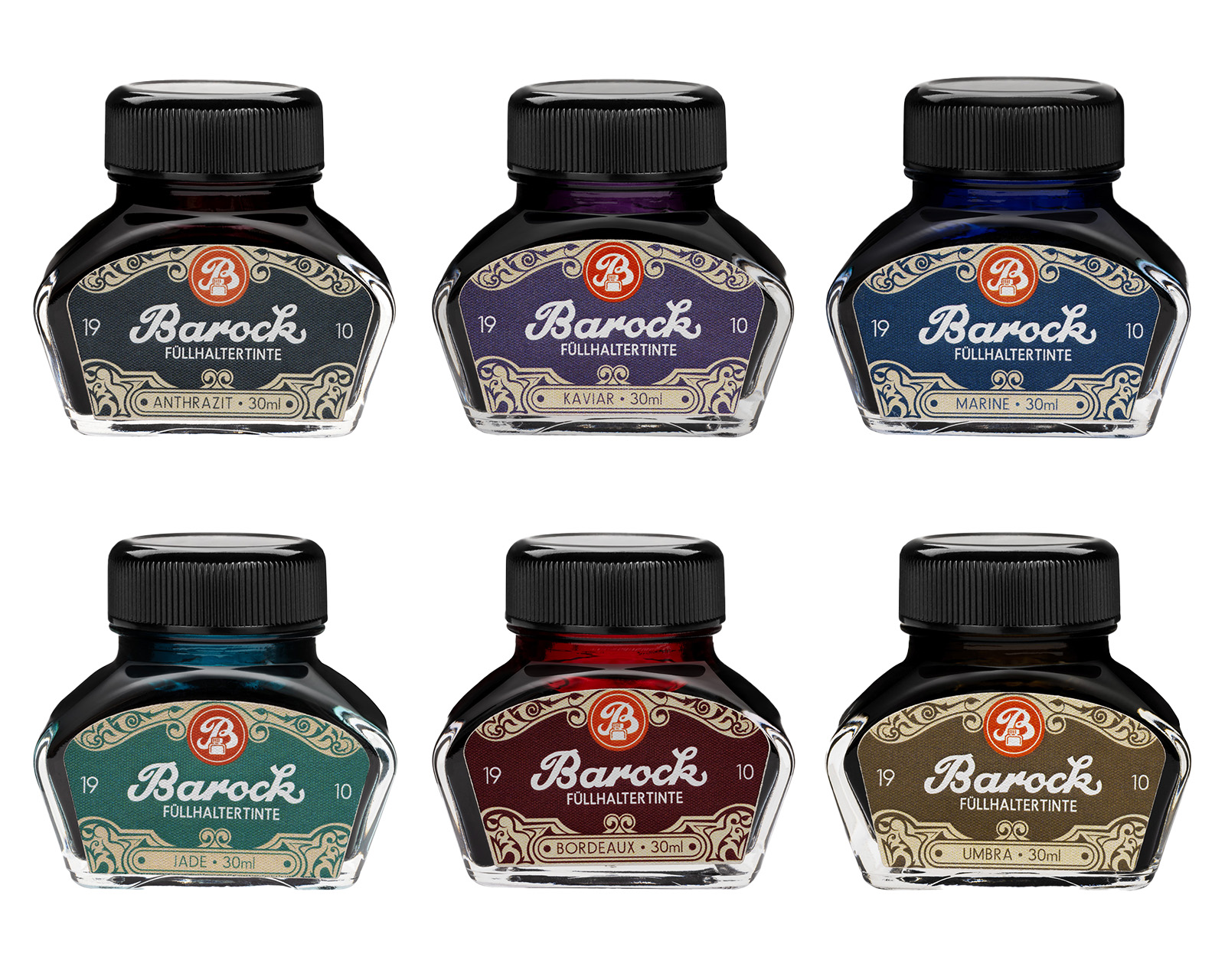 Barock 1910 writing ink, fountain pen ink in 30 ml jar
Barock 1910 writing ink, fountain pen ink in 30 ml jar
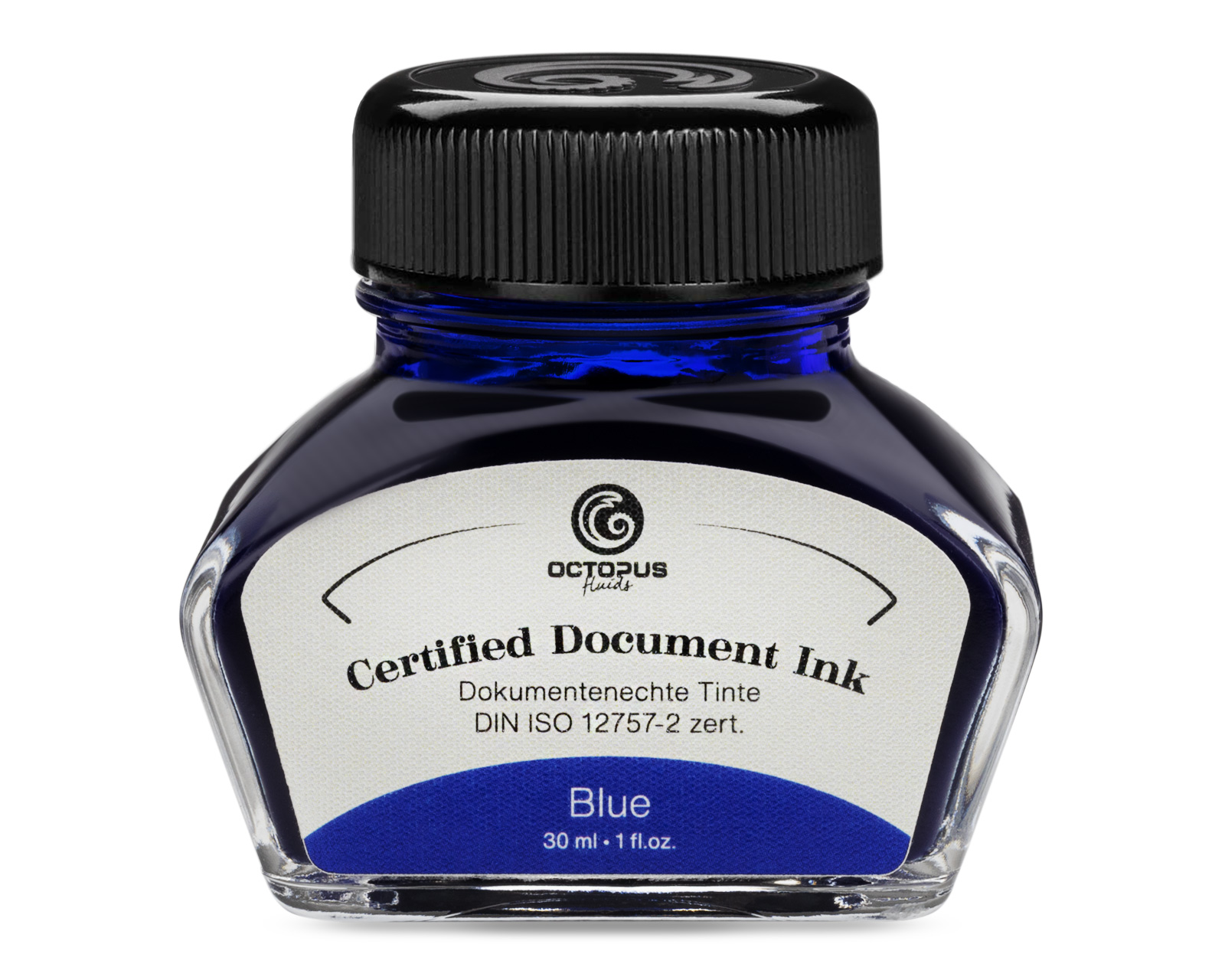 Document Ink blue, document-proof ink, certified according to DIN ISO 12757-2, 30 ml
Document Ink blue, document-proof ink, certified according to DIN ISO 12757-2, 30 ml
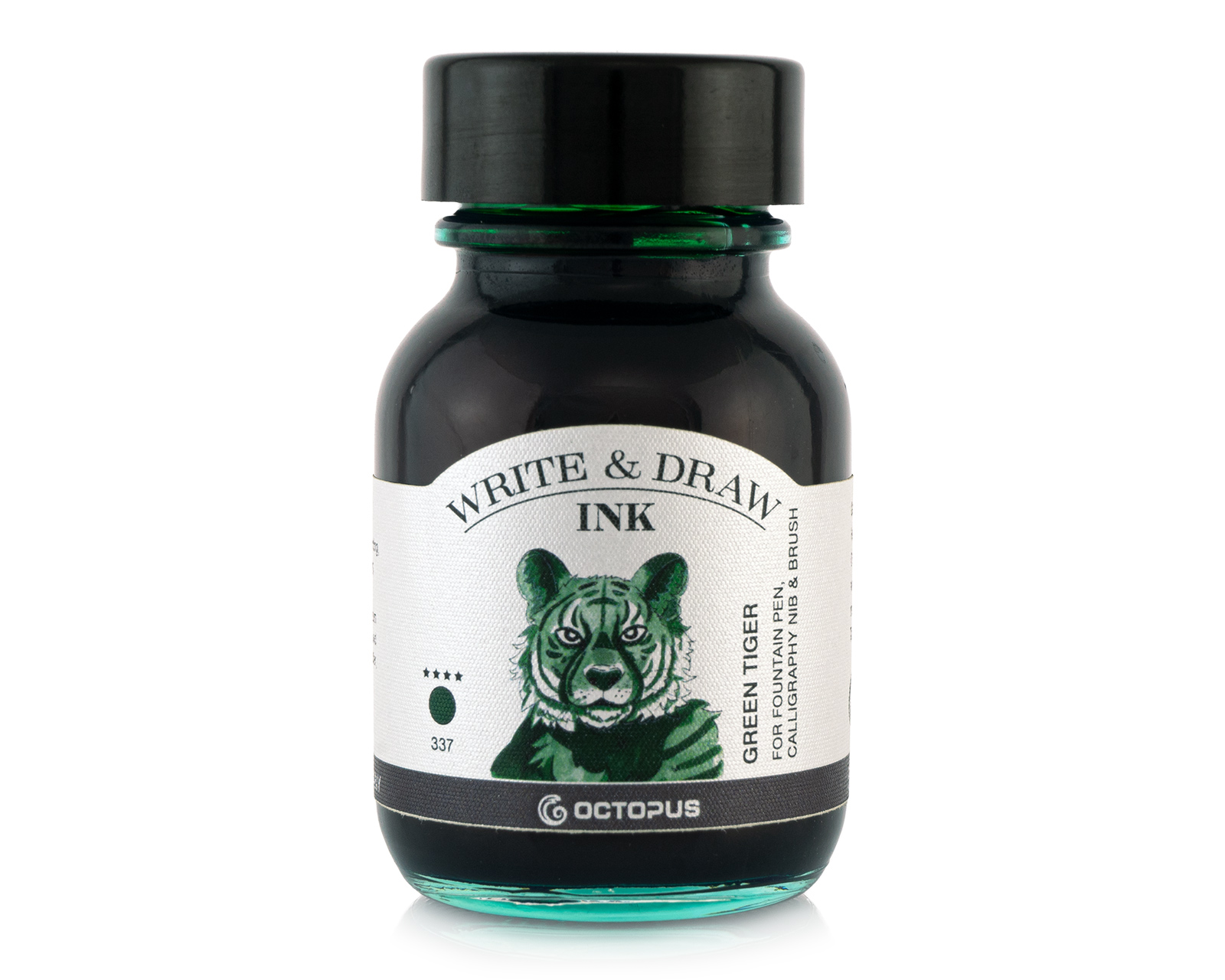 Write and Draw Ink 337 Green Tiger, waterproof drawing ink for fountain pens, 50ml
Write and Draw Ink 337 Green Tiger, waterproof drawing ink for fountain pens, 50ml
Octopus Write & Draw Ink, waterproof ink for fountain pen, nib and brush, vegan
The Octopus Write & Draw inks are unique, smudge-proof and waterproof writing and drawing inks in a wide range of colours. They were developed for daily use in fountain pens and are also popular with graphic artists, illustrators, calligraphers and artists for writing, sketching, drawing and colouring with calligraphy pens, glass pens or brushes.
Each of the 38 brilliant shades inspires with its intense colour power thanks to its high, balanced pigmentation. In addition to a deep black and various shades of grey, the extensive colour palette also includes a particularly opaque white, which can be used on dark backgrounds.
During the development of the drawing ink, special attention was paid to its use in the fountain pen. The use of the finest colour pigments in a carefully balanced formula ensures high light fastness and a good, even ink flow without clogging the ink duct of the fountain pen. These pigmented writing inks also feature the excellent writing behaviour of the classic Octopus fountain pen inks. The Write & Draw drawing ink meets the requirements for document-proof ink according to DIN ISO 12757-2 and DIN ISO 14145-2 and is produced exclusively with vegan ingredients.
Writing enthusiasts love the razor-sharp typeface that can be achieved on fountain pen-suitable paper and the pleasant shading of the Write & Draw writing ink. Calligraphers can create the finest hairlines and impressive flourishing elements, while urban sketchers can draw precise outlines.
The ink dries waterproof in a very short time and can then be painted over with another shade of Octopus Write & Draw ink or watercolour. It is eraser-proof and most of the colours are also highlighter-proof.
Both pure and diluted with water, Octopus Write & Draw ink is excellent for colouring. Used undiluted, the waterproof ink convinces with its opacity. The many colours of Octopus drawing ink can be mixed with each other, but also with water. In this way, countless colour shades can be achieved for beautiful watercolour effects.
Unlike most other waterproof inks, Octopus Write & Draw can be used in a fountain pen without hesitation. However, care should be taken not to let the fountain pen dry out. The water resistance of Write & Draw Inks is created with the help of a cross-linking binder, which cannot be easily dissolved when dry. We therefore recommend that you rinse and clean your writing instrument carefully after use to prevent the ink from drying up accidentally.
The Octopus special cleaner for pigmented inks is available for cleaning your writing Instruments.







